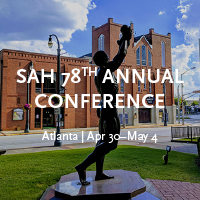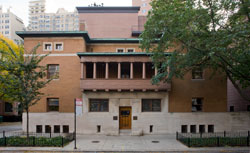-
Membership
Membership
Anyone with an interest in the history of the built environment is welcome to join the Society of Architectural Historians -
Conferences
Conferences
SAH Annual International Conferences bring members together for scholarly exchange and networking -
Publications
Publications
Through print and digital publications, SAH documents the history of the built environment and disseminates scholarshipLatest Issue:
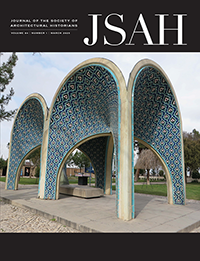
-
Programs
Programs
SAH promotes meaningful engagement with the history of the built environment through its programsMember Programs
-
Jobs & Opportunities
Jobs & Opportunities
SAH provides resources, fellowships, and grants to help further your career and professional life -
Support
Support
We invite you to support the educational mission of SAH by making a gift, becoming a member, or volunteering -
About
About
SAH promotes the study, interpretation, and conservation of the built environment worldwide for the benefit of all
Membership grants you access to exclusive resources and programs and provides support for new research and programs. Compare benefits across all our membership levels and choose the membership level that works for you.
Every Member Receives
- A yearlong subscription to the Journal of the Society of Architectural Historians (JSAH). Choose from digital access only or a combined print and digital subscription.
- On-demand access to the complete JSAH Archive (1941–present)
- Member rates for registration to SAH’s Annual International Conference
- AIA CES credits earned through conferences and study tours
- Eligibility to apply for SAH grants and fellowships
- Access to members-only lectures, virtual meetups, and more
- Connection to peers through 12 topic-focused SAH Affiliate Groups
- Access to more than 200,000 images of the built environment through the SAHARA database
- Access to SAH Commons online scholarly network
- Discount of 50% on JSTOR access with JPASS
- Eligibility to serve on the SAH Board or committees
- Subscription to the SAH Newsletter and Opportunities Weekly Roundup
Membership Levels
SAH Member
Our most popular membership tier offers optimized pricing to help everyone participate affordably in our community. Emerging scholars can apply for a one-year membership grant that helps bridge the gap between the Society's subsidized student memberships and full-cost SAH memberships.
| Rate | Description | Price: Digital | Price: Digital + Print |
| Individual | 12-month benefits for one person | $163 | $173 |
| Joint | 12-month benefits for two people (domestic partners). Each person receives a unique member ID and their own login to the member portal. | $233 | $243 |
| Retired/Emeritus | Discounted individual membership for former professionals on a fixed income | $98 | $108 |
| Reduced | Discounted individual membership for people working independently or at an institution without full-time employment. This includes adjunct and contingent faculty unemployed workers. | $98 | $108 |
| Student | Discounted individual membership for students currently enrolled in an undergraduate or graduate program in architectural history or related disciplines. | $60 | $70 |
| Professional Associate | Discounted individual memberships for groups of professionals working in the same museum, office, or firm. Ideal for architects, research or preservation groups, museum staff, and public design education. | $179 for first member + $103 for each additional member at the same institution | |
Upper-Level Member
Show your support for SAH’s mission by including a tax-deductible donation along with your Individual or Joint print + digital membership. Upper-level members receive all the benefits of a regular membership plus:
- Discount on registration for SAH Annual Conference, rates given below.
- Acknowledgement in four quarterly issues of JSAH, the annual report, and quarterly donor reports
- Membership to Frank Lloyd Wright National Reciprocal Sites Program, with which our headquarters, the Charnley-Persky House is affiliated.
- Early registration access for SAH Study and Excursion tours
| Tier | Donation | Price with Individual Membership | Price with Joint Membership | Discount on Annual Conference Registration |
| Cornerstone | $150 | $323 | $393 | 5% |
| Pillar | $350 | $523 | $593 | 7% |
| Keystone | $500 | $673 | $743 | 8% |
Life and Benefactor Member
Show your long-term commitment to SAH by becoming a Life member. Life members’ dues provide unrestricted funds to support the Society’s mission and continued opportunities for all members. Lock in your price and enjoy the most comprehensive suite of member benefits without the need to renew each year.
Life members receive these additional benefits:
- Acknowledgement in JSAH, annual report, and quarterly donor reports
- Membership to Frank Lloyd Wright National Reciprocal Sites Program, with which our headquarters, the Charnley-Persky House is affiliated.
- Early registration access for SAH Study and Excursion tours
- Specialty membership card
- Free tour of SAH's historic headquarters at the Charnley-Persky House in Chicago, IL
- One complimentary walking tour during SAH Annual Conference, reserved in advance, on a space-available basis.
- Free copy of an SAH Buildings of the United States book of your choice
Current Life Members can enhance their commitment to SAH by becoming a Benefactor through a $5,000 tax-deductible donation.
| Tier | Price | Donation Total |
| Life | $5,000 (one payment or four annual payments of $1,250) | None * |
| Benefactor | $10,000 | $5,000 |
* Life memberships are amortized over a period of 20 years and pay for annual benefits. There is no tax-deductible portion associated with Life membership.
President's Circle
SAH is immensely grateful to the many Life and Benefactor Members who continue to support the Society financially year after year. President’s Circle status recognizes the ongoing commitment these members show.
President’s Circle status is an annual distinction given to all Life and Benefactor members who make gifts to the Society of Architectural Historians totaling $1,000 or more during a given 12-month period. The status is applied to a donor as soon as they have achieved $1,000 in gifts within a single calendar year. The status is valid for 12 months from that date, and the date shall serve as an anniversary by which to renew their President's Circle status with one or more gifts totaling $1,000.
President's Circle members receive special benefits as thanks for their support:
- 10% discount on member-rate conference registration
- Recognition from the podium at SAH Celebrates annual gala
Limited-Access Affiliate
Affiliate membership permits an individual to participate in the activities of one or more SAH Affiliate Groups and the SAH Commons online scholarly network, without access to any other SAH benefits such as JSAH or discounted registration for conferences. Price is $25 per year.
Institutional Subscription
Institutional membership provides a subscription to JSAH and/or JSAH Online for communities of readers at public and academic libraries, museums, schools of architecture, architectural history departments, and other large institutions. Institutional subscribers receive the SAH Newsletter, qualify for discounted Career Center job ads, and member-rate registration for two library staff attending the SAH Annual International Conference.
The University of California Press handles institutional subscriptions on SAH's behalf. Visit the UC Press website to join or renew your Institutional subscription.
| Subscription Type | Price per Year | Additional Benefits |
|---|---|---|
| Digital Only | $693 | |
| Print + Digital - Domestic | $781 | |
| Print + Digital - International | $807 | |
| Sustaining | $881 |
|
Affiliate Groups
SAH Affiliate Groups are comprised of SAH members who share a common, narrowly defined interest, scholarly or otherwise. Participation in Affiliate Group activities is a benefit of SAH membership.
SAH Chapters
SAH has chapters located across the United States. Chapters are independently run organizations that are affiliated with SAH. SAH members can join chapters in their region.
Member Stories
Member Stories: Ashley Gardini
Aug 22, 2022
by
SAH News
Ashley Gardini is an adjunct instructor in the Department of Architecture/Engineering at Diablo Valley College. She lives in the San Francisco Bay Area and has been a member of SAH since 2019. She also can often be found on Twitter, @AshleyGardini.
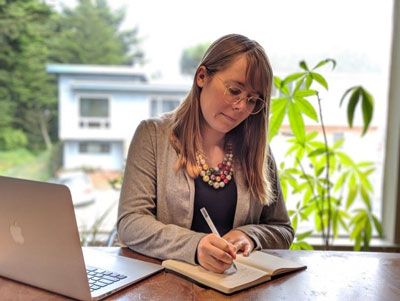 Can you tell us about your career path?
Can you tell us about your career path?
I teach at community colleges. I kind of stumbled into architectural history, but I couldn’t be happier! While attending classes at my local community college, I enrolled in an art history class and absolutely fell in love. What I enjoyed most in those classes was learning about a building’s history and design. At the time, I had no idea architectural history was its own field (it would take me years to figure that out). I went on to earn a BA in art history and after graduation, I spent several years working for the Fine Arts Museums of San Francisco.
After I realized working in museums wasn’t the career path for me, I decided to apply to graduate schools to pursue art history. While there, I ended up studying under an architectural historian, pursuing a thesis on Italian Futurist architecture, and finding my path into architectural history. It was also during graduate school that I realized my passion for teaching. Once I decided I was going to teach, I knew it was going to be at the community college level. Some of the best instructors I’ve ever had were when I was attending community college myself. I wanted to be one of those instructors.
What projects are you currently working on?
I’m at a bit of a crossroads for projects, and it’s a nice place to be. Previously, my research focused on Italian Futurist architecture and the legacy of Antonio Sant’Elia. While I still am really fascinated by that period of architectural history, I feel like my role there is complete.
Since then, I’ve become far more interested in how we teach and engage with architectural history. This really is an influence of my time serving on the Advisory Committee for the SAH Data Project. (I should note here that the SAH Data Project collected a fantastic amount data on our field, and I hope everyone reading this had a chance to check it out!). There were a lot of interesting findings from that project, but one section that has stuck with me is how students are introduced to architectural history. For example, it showed that my experience of not realizing architectural history was a field of study in college—which is why I pursued degrees in art history—is a common experience. So how do we change that? And while, as expected, visits to historic buildings or museums initiated many respondents’ interest in architecture, many students who responded to the survey also pointed to media, such as movies, television, or podcasts, as sources that drew them to architectural history before college. How can we use that in the classroom? How can we use that to grow our field?
My interest in “how we engage with architectural history” is also shaped by teaching at community colleges. The student body you encounter in your community college classes is incredible—everyone from first-year college students or high school students to those returning to education late in life or simply taking the course for fun. How do you create a class that serves all those needs? This is something that I’ve been analyzing and exploring since I started teaching, but the SAH Data Project gave me a model to think about how obtaining data can provide proof to anecdotal experiences.
I don’t know where this avenue of research is going to take me. Right now I have a lot of questions and not many answers.
Who has had the biggest influence your work or career?
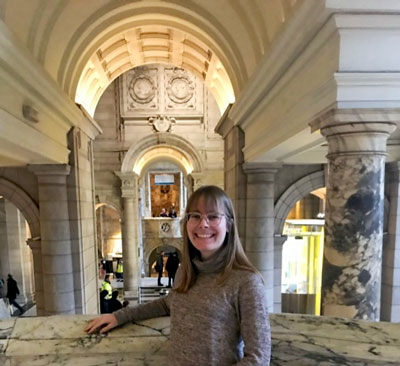 There have been so many people who have supported and influenced my work. From community college to graduate school, I had instructors who challenged me while cultivating my love for this field. Some were also so open and honest about the pros and cons of working in both museums and academia. This allowed me to pursue my career and research with reasonable expectations.
There have been so many people who have supported and influenced my work. From community college to graduate school, I had instructors who challenged me while cultivating my love for this field. Some were also so open and honest about the pros and cons of working in both museums and academia. This allowed me to pursue my career and research with reasonable expectations.
My writing on Italian Futurism was greatly influenced by two individuals: the author Patricia Albers and the scholar Dr. Günter Berghaus. I was fortunate to meet Albers as an undergraduate and years later she graciously agreed to be on my thesis committee. At the time, she gave me some of the best writing advice I’d ever received and I’m still grateful for the encouragement she gave me during that process. Dr. Berghaus encouraged my research to continue after graduation, resulting in my contributions to the International Yearbook of Futurism Studies.
My career now has been shaped by many of my fellow instructors—both ones I work with in person and ones I’ve met through Twitter. We support each other. We share teaching material. We sympathize. Academia is a far less lonely place when help is only a text away.
What is your biggest professional challenge?
My biggest challenge is making academia work within a healthy work-life balance. It’s difficult! When I first started teaching, I was working constantly. As any new adjunct developing course material knows, those few hours of lecture each week require hours upon hours of preparation. It also feels hard to say “no” when you’re contingent and are hoping to be offered employment in future semesters. Academia (at least in the United States) rewards those with a workaholic nature.
As I’ve become more secure in my adjunct career, it’s become easier to say “no.” And recognizing how difficult it was for me at the beginning of my career, I’ve also tried to become more vocal about creating and maintaining a healthy work-life balance for fellow adjuncts and students. Students are often left out of this discussion, but I try really hard to create class policies that respect their time and health. Especially in this moment where we can all work from home, and thus work all the time, it doesn’t benefit anyone to have a burned-out instructor teaching a class of burned-out students.
Why did you join SAH?
I was invited to join. It turned out that SAH was looking for someone with my type of experience—teaching architectural history at community colleges—to serve on the Advisory Board for the SAH Data Project. As a community college adjunct, professional academic organizations never felt like a very welcoming place, and sadly, I’m sure there are still a lot of folks out there who still feel this way. I’m glad to have found a space in an organization that values the diverse perspectives across academia.
You currently serve on the SAH Board and Membership Committee. Can you tell us about your work at SAH?
I am really enjoying my time serving SAH. In serving both the SAH Board and Membership Committee, I try to be an advocate for contingent faculty. That’s the voice I represent, but let me emphasize that I’m not the only one serving SAH and bringing up these concerns. This organization is made up of so many committed individuals who recognize the many different academic experiences.
I should use this profile to mention that I’d absolutely love to hear from SAH members who are emerging scholars and contingent faculty. Please reach out!
Do you have a vision for how SAH should evolve in the future?
Being an advocate for contingent faculty, I’d love to see more support for those of us working precarious positions in academia. That can come in many ways. More financial support is always a plus, but also just making space to recognize and validate our concerns also helps. SAH has spent the last couple of years asking itself how the organization can be more inclusive and more transparent. These are important steps for the organization. I see this bringing positive changes, and I’m excited to see how SAH continues to evolve.
What advice would you give to someone who wants to enter your field?
Go for it! Teaching at the community college level is so fulfilling. At that level, you are introducing so many students to architectural history for the first time. You are literally changing how they see the world around them. It’s truly the best position there is.
SAH members engage with the history of the built environment through a broad array of specializations, professional fields, and areas of interest. Member Stories is a regular feature that recognizes the expertise and unique experiences of our members.
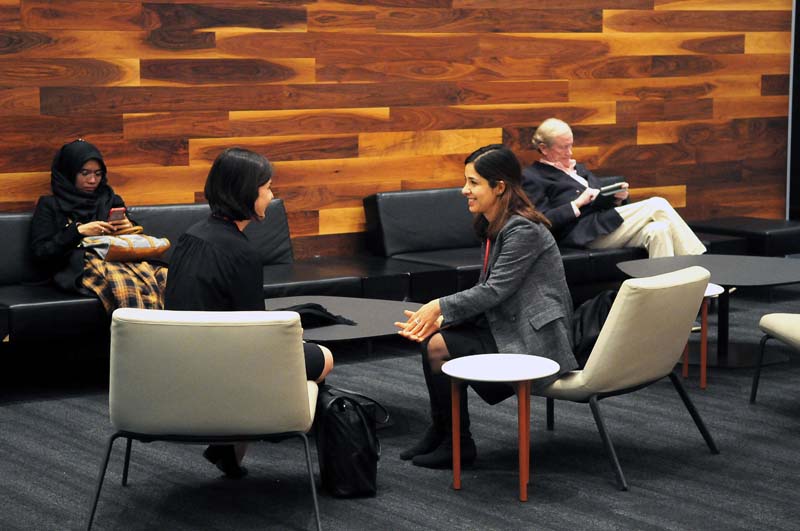
Membership Grants
Emerging scholars can apply for a one-year membership grant that helps bridge the gap between the Society's subsidized student memberships and full-cost SAH memberships.
